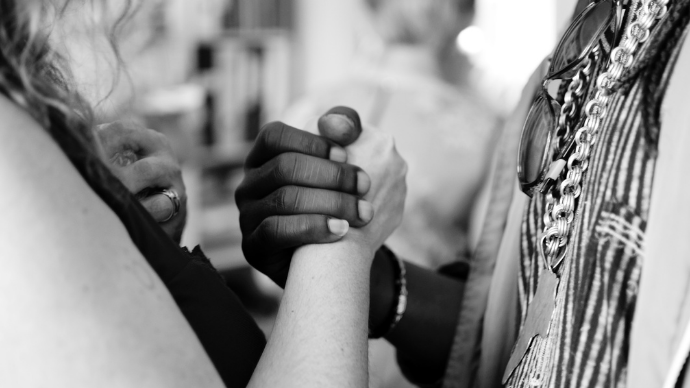Be more than a body.
More than an empowering mantra, that is a call to action, led by Dr. Lindsay Kite and Dr. Lexie Kite, body image researchers and founders of the nonprofit Beauty Redefined.
To take a powerful leap forward for positive body image the Kites ask us to see beyond the “all bodies are beautiful, flaws and all” messaging, which is important because it expands the idea of beauty, to take the focus off looks by knocking beauty from the pedestal of how girls and women are valued.
Bombarded by messages defining their value by their body’s appearance, women and girls are seen as bodies first — objects, which the Kites call out as objectification — a foundational piece of their work.
So let’s define objectification, discuss how women internalize these messages called self-objectification, and then transform the pain and shame of body image disruptions through “body image resilience” to be more than body.
Redefining ‘normal’
Objectification is any message or idea that slowly chips away at the idea that women are fully human. It treats us as objects, as parts, in need of fixing, to be looked at, to be evaluated, to be used, to be consumed, to be tossed aside when we don’t fit the ideals, says Dr. Lexie Kite.
It’s social media ads marketing tummy control clothes to hide and flatten belly “rolls.” It’s billboards selling treatments promising to cure cellulite — a normal and natural characteristic of at least 80% of women’s bodies. It’s the amount of screen time movies and TV shows devote to showing women half naked or all naked compared with men. It’s the belief that women need to lose weight to fit into a smaller size wedding dress instead of buying a dress that fits now. It’s in the lyrics of songs — have you listened to them closely?
It’s everywhere. We’re so used to seeing and hearing these messages that it has become invisible and “normal” to objectify women’s bodies. But it’s not normal.
‘The Invisible Corset’
Girls were once fully embodied, enjoying their bodies without a care in the world as to their external appearance. Their bodies were just their Earth suits — that is, until their first body image disruptions occurred, such as being teased for being flat-chested or being told they’d be so much prettier if they’d just lose weight.
Girls learn that their external shells matter. They then internalize these objectifying messages, seeing themselves from this outside view, objects to be consumed. This is self-objectification.
It starts young. Nine years old is the average age when a girl puts on her “invisible corset,” knowing that going forward her value is inextricably tied to her appearance, says Lauren Geertsen, author of “The Invisible Corset.”
Body image disruptions become all consuming: When she steps on the scale and doesn’t like the number, sees herself in a photo, feels self-conscious in her school gym uniform, tries on clothes in the dressing room and, as a woman, when her body is judged by a romantic partner, when she has a baby, when she goes through a breakup … and the list goes on.
The feeling is shame, the sense that there’s something wrong with her body — with her.
From shame to resilience
To cope with disruptions, women and girls can take three pathways, according to the Kites’ research. The first and most harmful path is sinking deeper into shame, which can lead to depression and disengaging with life, to trying to numb the pain with dangerous behaviors such as cutting, disordered eating and disordered exercise.
Or she may try to find “comfort” in our objectifying culture by trying to fix her “flaws,” covering up under-eye circles, fighting wrinkles, strategically dressing to hide parts of her body. This becomes a normal part of a girl’s and woman’s life. Again, not normal. But most women live in this state throughout their lives:
Age 16: I hate my body.
Age 24: I hate my body. I wish I looked like I did at 16.
Age 30: I hate my body. I wish I looked like I did at 24.
Age 37: I hate my body. I wish I looked like I did at 30.
Age 45: I hate my body. I wish I looked like I did at 37.
Age 50: I hate my body. I wish I looked like I did at 45.
Age 65: I hate my body. I wish I looked like I did at 50.
(Source: The Body Love Society)
But women and girls can disrupt this destructive path by taking the third path, rising with “body image resilience” — the ability to become stronger because of the difficulties and shame women experience in their bodies, not in spite of those things — which is the Kite sisters’ mission and the focus of their book “More Than A Body.”
My favorite resilience strategy is “prove yourself wrong.” Let’s say you’re stuck in the self-objectifying belief that you’re not lovable and can’t find love until you lose weight. Instead of sinking into shame or trying to “fix” your body, you choose resilience instead by dating now — and prove your worst fears wrong.
Ultimately the solution is to give girls and women their humanity back by knocking beauty from the pedestal of how our girls and women are valued.
“Achieving peace with our bodies through developing positive body image is the final frontier for too many woman — the last and most stubborn barrier to our own confidence, fulfillment, power, and self-actualization,” the Kite sisters write. “We can be empowered and emboldened and confident and successful in every other area of our lives, and yet still struggle with deep-seated body shame and self-objectification to which we sacrifice incredible amounts of time, money, emotion and energy.”
So let’s be more than beautiful, more than a body — and take action and rise with resilience.
(Originally published in the Jackson Hole News and Guide, February 17, 2021).


